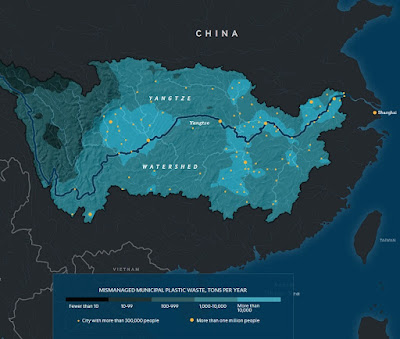NASA's Earth Observatory created this stunning image of aerosols - airborne particles and liquid droplets.
These aerosols "range in size from a few nanometers—less than the width of the smallest viruses—to several several tens of micrometers—about the diameter of human hair. Despite their small size, they have major impacts on our climate and our health." - via NASA aerosol page
In the image above blue represents sea salt. The concentrated areas show major storms, particularly two cyclones off the coasts of Japan and Korea and a hurricane approaching Hawaii. Red indicates black carbon, mostly from agricultural burning in Africa and Wildfires. Purple is dust, mostly from deserts. Also included is a layer of white night light data to indicate urban areas. Here is the legend enlarged for emphasis.
The NASA page includes a zoomed in detail from southern Asia, emphasizing the deserts, cyclones and population centers of the area.
More from NASA here.
















